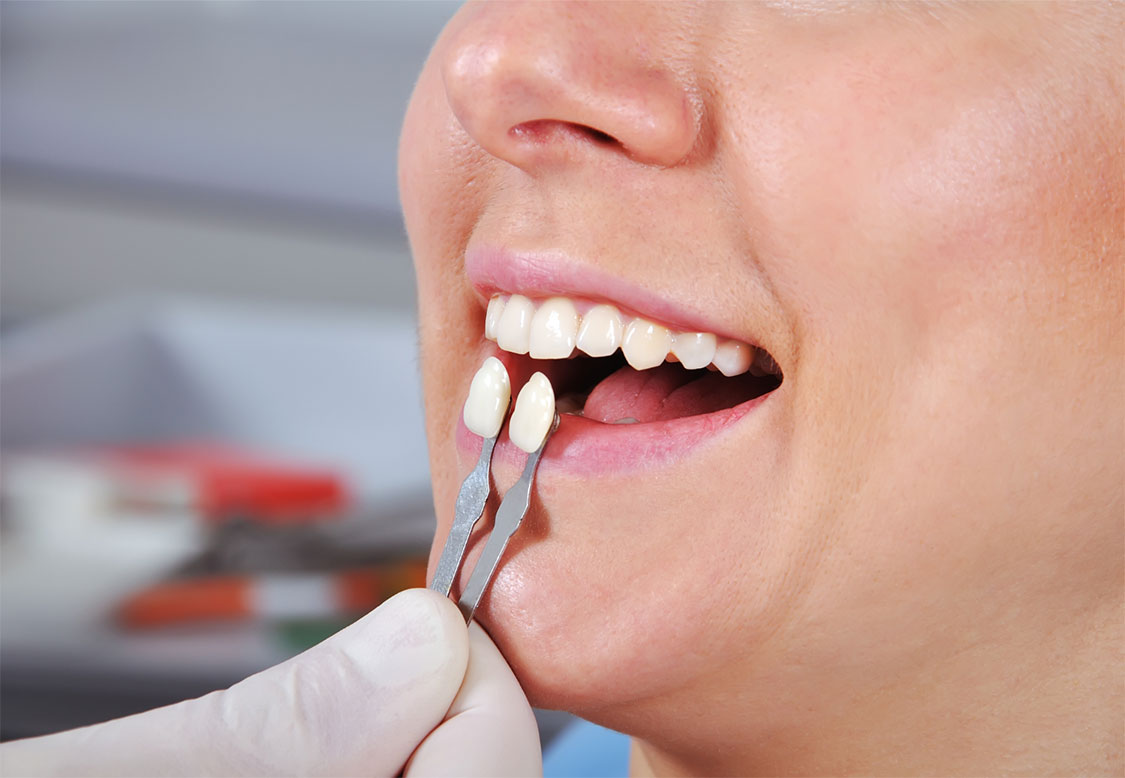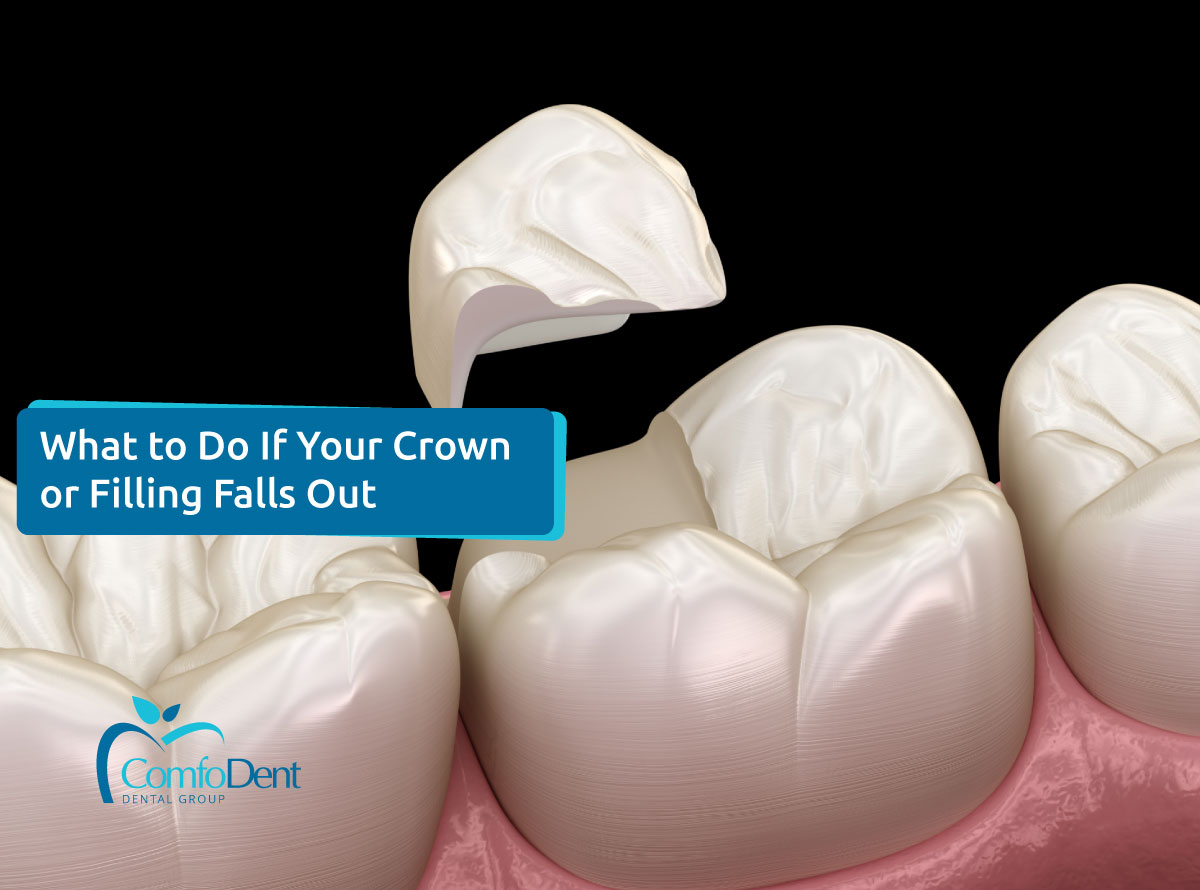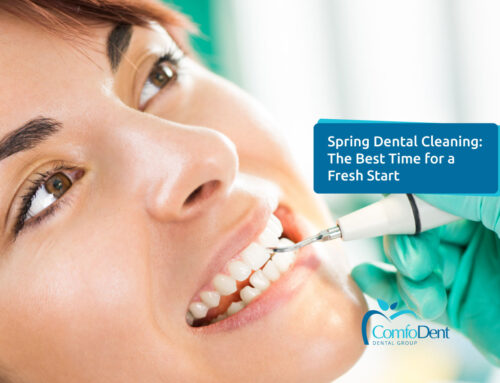If a dental crown or filling falls out, it can feel alarming—but it’s a more common dental issue than you might think. Whether it happens while chewing or even during regular brushing, it’s important to act quickly to protect your tooth and maintain your oral health.
At Comfodent Dental Group, we’re here to help guide you through exactly what to do next. Whether you’re dealing with a lost temporary crown, a loose permanent crown, or a missing filling, our team can provide fast, effective treatment.
Why Do Crowns or Fillings Fall Out?
There are several reasons a dental crown falls out or a filling loosens:
1. Normal Wear and Tear
Fillings and crowns are durable, but they’re not designed to last forever. Over time, the material can weaken due to daily use—especially if you regularly consume hard or sticky foods, which can dislodge restorations.
2. Tooth Decay Under the Restoration
If decay develops beneath a crown or filling, it compromises the bond holding the restoration in place. When this happens, the dental work may fall out, and the underlying tooth may be sensitive or painful.
3. Poor Bonding or Material Breakdown
In some cases, the bonding cement used to place a crown or filling may degrade over time. This can lead to loosening, especially in older restorations or if the initial bonding wasn’t secure.
4. Trauma or Injury
Accidents, sports injuries, or grinding your teeth at night can lead to a dental crown falling out unexpectedly. Wearing a night guard can help reduce this risk if you’re prone to grinding.
What Should You Do If Your Crown or Filling Falls Out?
When this happens, staying calm and following these steps will help protect your tooth and prevent further damage.
Step 1: Stay Calm and Retrieve the Crown or Filling
If you can find the dental crown or filling, carefully place it in a clean container or sealed plastic bag. Bring it to your appointment—it may be possible to reuse it.
Step 2: Rinse Your Mouth Gently
Use warm salt water to rinse the area. This helps keep the exposed tooth clean and reduces the risk of infection.
Step 3: Avoid Sticky or Hard Foods
Until you can see your dentist, avoid chewing on the affected side of your mouth. Stay away from sticky foods (like gum or caramel) and anything hard (like nuts or ice) to prevent further damage to the exposed tooth.
Step 4: Protect the Area if Necessary
If the tooth is sensitive or sharp, you can apply dental wax or over-the-counter temporary filling material from a pharmacy to shield it. This is only a temporary solution until you visit your dentist.
Step 5: Call and Schedule a Visit
It’s important to visit your dentist as soon as possible. The longer the tooth remains exposed, the more likely it is to experience additional damage or infection.

What Happens at the Dental Office?
When you visit Comfodent Dental Group, our team will carefully evaluate your tooth and determine the best course of action.
Examination and Cleaning
We’ll start by examining the tooth and cleaning the area to assess any decay or damage.
Can the Crown or Filling Be Reused?
If the permanent crown or filling is still intact and the tooth structure underneath is stable, we may be able to reattach it. In other cases, a new permanent crown or filling may be needed.
Temporary Crown Placement
If a new crown needs to be custom-made, we’ll place a temporary crown to protect your tooth in the meantime. This ensures your comfort and prevents further damage while your new crown is being prepared.
Digital Scans and Imaging
Using our advanced digital equipment such as the TRIOS scanner or CBCT imaging, we can take precise measurements to create a crown that fits perfectly and looks natural.
How to Prevent Future Issues
After your dental restoration has been repaired or replaced, follow these steps to help prevent future problems:
-
Brush and floss daily to maintain oral health
-
Avoid chewing hard or sticky foods
-
Wear a night guard if you grind your teeth
-
Keep up with regular checkups and cleanings at Comfodent Dental Group
-
Report any discomfort or looseness in crowns or fillings right away
With proper care, your permanent crown or filling can last many years.
Q&A: Your Most Common Questions Answered
Q: Is a lost crown or filling a dental emergency?
A: It can be. If you’re in pain or if the tooth is exposed, it’s best to visit your dentist promptly.
Q: What should I eat until I get it fixed?
A: Stick to soft foods like yogurt, mashed potatoes, or soup, and avoid chewing on the affected side.
Q: Can I glue the crown back myself?
A: No. Never use household glue. Only dental adhesives designed for temporary use should be applied—and only if advised by a dental professional.
Q: How soon should I come in?
A: We recommend seeing a dentist within 24 to 48 hours. At Comfodent, we offer same-day emergency dental appointments to restore your smile quickly.
Q: Will I need a new crown or filling?
A: Not always. If the dental crown or filling is still in good shape, and the tooth isn’t damaged, we may be able to reattach it.
Don’t Ignore a Missing Crown or Filling—Call Us Today
Losing a filling or dental crown is never ideal, but with the right steps and prompt attention, your tooth can be protected and restored quickly.
At Comfodent Dental Group, we provide restorative dentistry, emergency dental services, and advanced technology to ensure you receive the best possible care. Whether you need a new permanent crown, a temporary crown while we prepare your restoration, or a new filling, our friendly team is ready to help.
Call now or book online for a same-day appointment. Let us restore your smile with comfort and confidence.






